Under the Microscope: Lupifaro Saxophones and Reeds

Introduction
I had never heard of the Lupifaro line of saxophones until I attended the 2013 NAMM show and ran into a gentleman by the name of Tatsuro Miyatake. Tatsuro gave me a sample pack of Lupifaro Classic strength 3 tenor reeds to test out. Once I returned home from the NAMM show, I tested the Lupifaro line of reeds and really liked them because these reeds were Rigotti cane which is some of the best cane out there today, and the overall sound of the Lupifaro reeds had a nice core.
Since I enjoyed testing the classic cut, I wanted to find out more about the Lupifaro brand. When I went online to check out Lupifaro’s website, I found out that Lupifaro also produced a line of saxophones. Being a saxophone gear-head, I knew I had to find a way to test play Lupifaro’s line of horns, especially since the professional line was reminiscent of the old vintage Mark VI.
To make a long story short, through emails and Skype conversations, I was able to meet Luca Cardinali, the creator of the Lupifaro line at my home in Florida. I had the chance to test play his Lupifaro Platinum tenor and alto saxophone as well as revisit his Classic cut and test play the Jazz cut reeds for soprano, alto, tenor, and baritone.
To better understand the Lupifaro brand, I will give you a brief overview of Luca Cardinali so you can understand his background, and then I will cover the Platinum tenor and alto saxophones as well as Lupifaro’s Classic and Jazz cut reeds.
Overview
Luca Cardinali
Luca began repairing wind instruments at an early age with master repairman Galavotti. In 1990, Luca obtained his music degree in clarinet and then continued to study the saxophone as well as work as a repairman. Luca had been a designer and product manager at the Borgani saxophone factory for over 5 years, during this experience he performed custom work on saxophones belonging to such famous players as Phil Woods, George Garzone, Lee Konitz, Jerry Bergonzi, M. Urbani, M. Giammarco, and F. Santucci . In 1995, Luca decided to open Atelier Cardinali to provide repair work as well as build custom instruments for professional musicians.
Lupifaro
Luca came up with the name Lupifaro because Lupifaro was a mythological figure who embodied strength. Luca has worked in the world of saxophones for thirty years as a technician as well as consultant. He met with Phaselus SA, a distributor in Switzerland, who believed in the quality and craftsmanship of Luca’s line of saxophones. Together, they decide to create a new line of exceptional instruments. Since Lupifaro’s output is certainly larger than what a single artisan could handle by himself, Luca works with a team whose number one focus is to continue to build saxophones by hand.
Each saxophone moves through all of the important phases of shaping and carefully annealing (ie: making more flexible) the bare metal – steps which characterize the soul and future life of each instrument. Luca’s design and construction of Lupifaro’s saxophones are the result of years of research paired with craftsmanship of the highest level.
Currently, Phaselus SA offers three series of saxophones: Silver, Gold, and the top-of-the-line Platinum, where the sound and vintage look go hand in hand with great intonation and precise mechanics.
Platinum Model Overview
One of the features of the alto and tenor saxophones belonging to the Platinum Series, aside from not including a high F# key, is the fact that the instrument’s joints are soldered. By soldering, the movement of the air column inside the instrument improves noticeably. This is due to the fact that there is no interruption between the bell and body, something that is different from most modern saxophones.
Further defining the saxophones in our Platinum Series, Lupifaro allows the musician to specify his or her personal set-up preferences and choose among many custom options that range from a selection of materials for the key buttons up to different pads.
To those professionals who value both the look and the sound of their instrument, Lupifaro offers custom engravings by Luca as well as the other members of his team upon request.
Lupifaro Platinum Tenor
Appearance
The Lupifaro Platinum tenor saxophone looks like it was based off the body of a Mark VI and has a neck styled after a Balanced Action or Super Balanced Action neck. The finish on this tenor is different from an un-lacquered or matte finish. The best way to describe this finish is an aged gold finish that has a very polished look. The white mother of pearl really makes the finish stand out and have a true vintage look. The engraving is done by hand by Luca and his team and is different from other manufacturers engravings.
Instead of the logo being placed above the Bb and B key, the logo is stamped on the front of the bell with a floral engraving around it. Putting the logo on the front of the bell reminded me of the older Yanagisawa models which had the Yanagisawa logo in the same spot. There is some engraving on the body but for the most part the engraving is floral and has Platinum in silver letters below the Lupifaro name.
Build Quality
The metals, cork, springs, pads, and resonators are all very high quality material. The metal and parts were all assembled by hand by Luca Cardenali, who spent on average 18+ hours to build, assemble, and play test each Platinum tenor model. Luca told me like any saxophone, each Platinum model will play a little bit different and each horn is built as if it was a custom horn with much attention to detail.
Tone & Response
The Platinum Tenor truly reminded me of my Mark VI tenor every time I went back and forth between both horns. I found the tone to be edgy and focused. I also found the overall response to be free-blowing but there was some resistance which allowed me to really push each note without the sound dying out.
I can best describe the sound as very Mark VI –ish but, it seemed that the overall sound and projection was enhanced and a bit easier to attain than my Mark VI. This can be contributed to the metal resonators. I did find the upper register to play a bit brighter then my Mark VI and the bottom register to play a bit fatter and have and overall warmer buzz.
Action
The action was comfortable under my fingers and was very easy to get adjusted to. The action felt just like my Mark VI, but the spring tension was tighter (which I might have adjusted because of my personal preference is for looser action). I found the key heights to lay fine throughout the horn and if you wanted the key heights to be raised or lowered that could be easily done. I found the palm keys to lay well when playing throughout the horn chromatically .
Intonation
The intonation on this saxophone was great. It was easy to achieve with very little effort to line up with the green light on my tuner. The altissimo range responded well and was fairly easy to control (but this is something I still need to continue working on).
Price
$4,800 USD
Overall
I have to say overall the Lupifaro tenor saxophone is one of the best horns that I have come across in terms of the basics. The basics that Luca was going for were to simply offer the player a “vintage” horn in every way, shape, and form, but with modern standards in improved build quality and intonation. I felt very comfortable taking this horn out on rehearsals. I still very much enjoy playing my Selmer Mark VI tenor, but for a modern horn, I have not played many professional modern saxophones that have come as close as to how a modern “vintage” horn should play.
Lupifaro Platinum Alto
Appearance
The Lupifaro alto saxophone is like the Platinum tenor with its Mark VI-looking bell and body and a Balanced Action or Super Balanced Action-style neck. The Lupifaro Platinum alto with the unlacquered/matte finish reminded me of my Selmer Super Balanced Action alto, but the Lupifaro Platinum alto has a bigger bore, like the 1960’s Mark VI’s.
Build Quality
The Lupifaro alto like the tenor is handmade and uses high quality brass, pisoni pads, metal resonators, blue-steel springs, and Luca’s extensive experience hand building saxophones.
Tone & Response
The sound of the Lupifaro alto has a neutral bottom and mid range as well as a clear and brighter upper range. The Platinum alto-like the tenor has a focused and edgy tone. The overall response was free blowing with a bit of resistance. I found that I had to push my mouthpiece all the way down the cork and get adjusted to the tuning of the horn at first because I was not used to the bigger bore of the Lupifaro Platinum alto compared to my SBA.
Action
The action was tight and very comfortable under my fingers. The lower stack felt very stable especially when I went down to the low Bb. The spatula keys also laid well when going up to the high F#, and of course, any adjustments in the palm keys can be made with either cork, rubber extensions, or custom work done by your trusted repairman.
Intonation
The intonation on my Lupifaro was better than my Selmer Balanced Action while also being as consistent and easy to control as my Yamaha custom alto. I found the Lupifaro alto to embody the consistency of a new Yamaha or Yanagisawa, but when it came to the overall sound, it embodied many characteristics with the old Mark VI and Super Balanced Action line of saxophones.
Price
$4,600 USD
Overall
The Lupifaro alto like the Lupifaro tenor did a great job at capturing the vintage characteristics of the great vintage horns, sticking with the basic saxophone layout, and incorporating the expertise of years of craftsmanship experience to truly build one of the best modern “vintage” saxophones I have played thus far.
Lupifaro Classic Reeds (White Box)
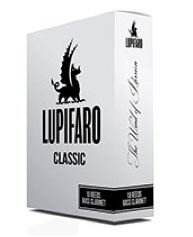
I found the Lupifaro 3 to be on the harder side so I tried the 2 1/2 and these felt much more comfortable for me to play on. Although these reeds are designed for the classical musician, I found the overall color of these reeds to be very neutral and not leaning towards the brighter or darker side. After talking with Luca, these reeds are similar to a Vandoren V12, but they also reminded me of the Rico Reserve cut. I believe that certain reed cuts tailor to certain styles of music BUT overall, you should try as many brands as you can to see which reeds you feel comfortable with.
Lupifaro Jazz Reeds (Black Box)
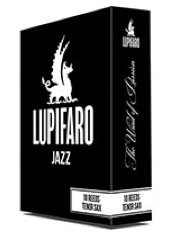
I found the Lupifaro Jazz cut for alto and tenor to play similar to a Rigotti gold box as well as a Jazz Rico Select unfiled. In addition, I found these reeds to be a bit on the harder side from what I am used to playing, so I would recommend trying a half size down or if you know a bit about reed shaving, I would buy your standard reed size and do a bit of shaving (which I do with a majority of reeds).
Overall
I enjoyed playing the Lupifaro Classic and Jazz cut because I like Rigotti cane and the Jazz cut leaned more towards the Vandoren ZZ and Jazz Rico Select reeds which I enjoy playing on. I would definitely check these reeds out if you get a chance and leave a comment below letting me know what you think.
Lupifaro Overall
After speaking with Luca Cardinali and play testing his saxophones as well as reeds, I can say that this is another brand of saxophones that will be a great addition to anyone’s horn collection or a great horn to consider when looking for a great vintage Mark VI or professional modern “vintage” tenor or alto.
If you are interested in finding out more about the Lupifaro line of products, please feel free to contact me, and if you can get a pass to NAMM 2014, visit his booth to test play the horns and reeds.


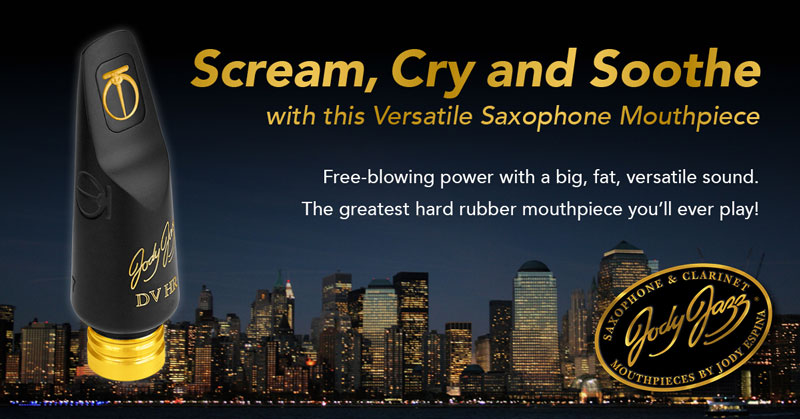

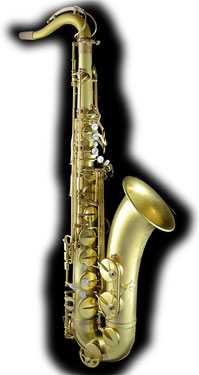
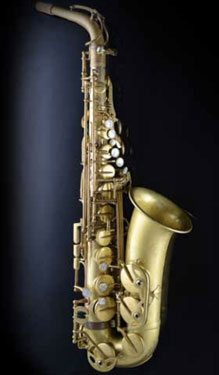


July 22, 2013 @ 5:38 pm
Zach: I e-mailed them to see if they would send me some sample reeds. They asked for my address which I gave them but so far I haven’t received any reed samples.
August 9, 2013 @ 3:27 am
Hi people, I’m the President of Phaselus, which is the owner of Lupifaro brands. Wich adress have you tried?
We dont have recieved your mail.
Please keep direct in toch with me at upazzoli@phaselus.com and I’ll obviously send some samples.
thank you
Roberto Upazzoli
July 24, 2013 @ 12:57 pm
I also emailed them about some sample reeds and never got a response back from them. Strange most companies would want people to try their product.
August 9, 2013 @ 3:27 am
Hi people, I’m the President of Phaselus, which is the owner of Lupifaro brands. Wich adress have you tried?
We dont have recieved your mail.
Please keep direct in toch with me at upazzoli@phaselus.com and I’ll obviously send some samples.
thank you
Roberto Upazzoli
July 24, 2013 @ 1:12 pm
Hey Larry & Tibbs
I will see what I can do.
I have some sample reed packs so if you let me know what you want to try I will do my best to get you some samples.
In addition. Most companies will send samples to potential endorsing artists or current endorsing artists.
Even as a product reviewer, not all companies will send me sample products unless I meet them in person or have a strong reference.
Zach
July 25, 2013 @ 7:49 am
How are the reed sizes compared to Vandorens?
July 24, 2013 @ 4:40 pm
Zach: Thanks for the offer. I play Orange box Rico 2.5 on tenor and sometimes a Plasticover # 3 for outdoors gigs. On alto which I use for teaching, I play a LaVoz Hard. So I would need something comparable to that.
This guy from the company did say he would try to send me some but so far nothing. Who sells them in the States? I told the guy I teach at 2 colleges (Old Dominion University and Tidewater Comm College and I was retired from a Navy Band). So I am not some beginner or college student in my 20’s.
Anyway send me a private e-mail to Lweintraub1@cox.net and I’ll send you my address.
Thanks Zach,
Larry W
March 31, 2014 @ 9:18 pm
Man I really wanted to try out their reeds, I asked them what the price of a box of tenor reeds was and they quoted me $60+. I laughed and said good luck with your business.
April 1, 2014 @ 3:40 am
Hi Jacky, I don’t know what’s your problem.
Yes we are more expensive that Vandoren or Rico. Therefore is the quality so that you will play all the reeds on the box and not 4 or 5 like by other brands. At the end are our reeds probably cheaper. Other people pay this price and are happy whit. It’s your choice.
And I offered you a better price, regular retail price is 62 USD for tenor and gratis shipping (about 20 usd from Swiss).
Thank you
Roberto
April 4, 2014 @ 7:43 pm
They finally sent me some sample reeds which was very nice of them. I played them and they were okay but they really didn’t vibrate like a good jazz reed. I did however like the clarinet reeds they sent me. I wrote the guy an e-mail and told him what I thought and I never heard back from him. But that’s okay. I figured they would be expensive which according to the other writer the are.
Now a reed that I have started to use along w/my Rico’s are Roberto Winds RW reeds. They come in strengths 2.5 soft, 2.5 Med, 2.5 hard etc, etc. I really like his reeds but they are a bit pricey, $41 @ box + shipping on the tenor reeds. They will sell you a 3 pack sampler also, for tenor it’s $13 + change a 3 pack.
Here’s the kicker all of these reeds are made by Rigotti but they all play different. I believe it’s because the cuts are different. Looking at my RW reeds and comparing them to Rigotti Gold reeds they do indeed appear to be cut different. Anyway besides the Lupifaro reeds they also make Rigotti Gold (which some people swear by), Queens reeds, Francois Louis Reeds and Roberto Winds RW Reeds. As mentioned above after trying all of them I like the Roberto Winds RW Reeds the best. They last longer and produce the sound that I like. So I alternate them w/my Rico Orange Box Reeds.
Anyway it’s your choice, try them all and see what you think. Also btw there’s a guy in SF, CA who sells a 3 pack sampler of Rigotti Gold Reeds. I found him by a Google search of the web. Good luck to everyone.
April 4, 2014 @ 8:24 pm
Hey Larry,
I personally like playing on the Lupifaro Classic 2’s and also enjoy the Roberto Winds 2H or 3S. I have found that sometimes you get a great couple of boxes and sometimes you get a bad bunch. I have seen this happen to many brands and that is why I bought the Reed Geek to use on some of the reeds that did not play to my standards to make them play better.
I am glad you got a chance to try the Lupifaro reeds.
Zach
October 2, 2024 @ 5:40 am
Mrs Mr.
Our company has specialized in the manufacturing of natural cork products for the musical instrument industry for over 40 years, in Portugal.
We manufacture all kinds of cork pads. natural sheet cork, flute and piccolo, natural cork oboe, head cork, strips sax and clarinet, boards, balls, stoppers, etc
If you are currently looking for a partner capable of supporting you, we invite you to consult our catalog and prices, attached and ask us for information.
We are at your disposal for any additional information you would like to obtain.
Best regards
Andre SOARES
http://www.imscork.com